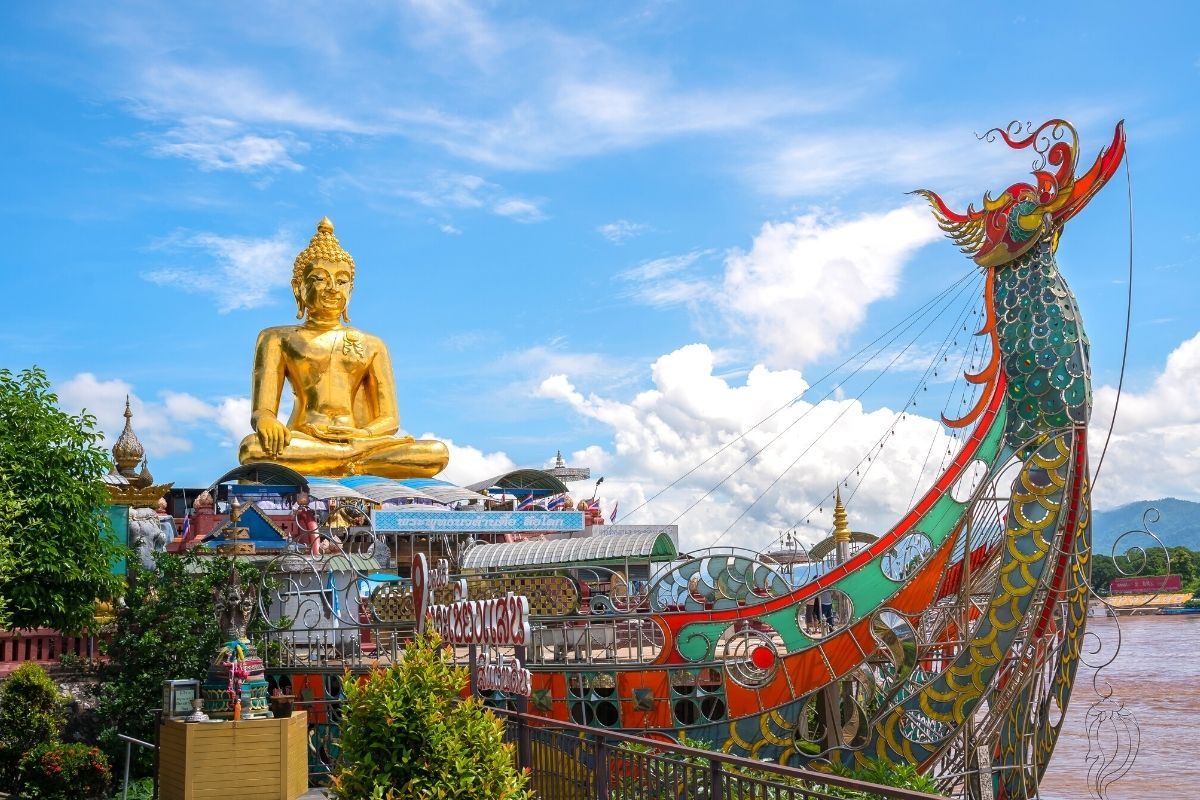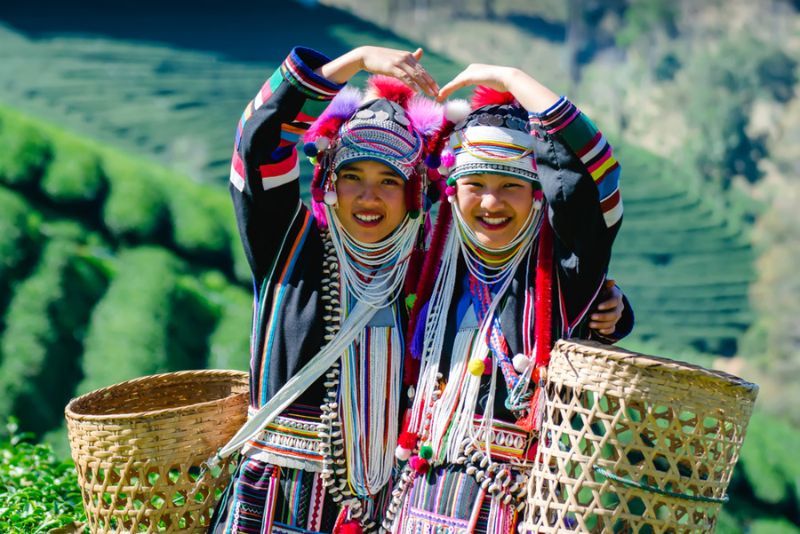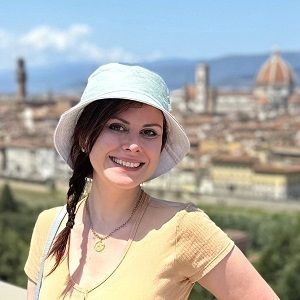Golden Triangle: Day Trips and Tours from Chiang Rai
The Golden Triangle is one of the most notorious spots in Northern Thailand, connected with the booming illicit opium trade of Southeast Asia. Covering three countries — Thailand, Myanmar and Laos — the area is home to a fascinating history, and is surrounded by remarkable scenery.
Golden Triangle day trips from Chiang Rai enable you to delve deep into Thailand’s history books to discover its roots in opium production, as well as experience the region’s fusion of cultures.
The Golden Triangle is one of the most notorious spots in Northern Thailand, connected with the booming illicit opium trade of Southeast Asia. Covering three countries — Thailand, Myanmar and Laos — the area is home to a fascinating history, and is surrounded by remarkable scenery.
Golden Triangle day trips from Chiang Rai enable you to delve deep into Thailand’s history books to discover its roots in opium production, as well as experience the region’s fusion of cultures.

(0/24) checking Musement...
The Golden Triangle is one of the most notorious spots in Northern Thailand, connected with the booming illicit opium trade of Southeast Asia. Covering three countries — Thailand, Myanmar and Laos — the area is home to a fascinating history, and is surrounded by remarkable scenery.
Golden Triangle day trips from Chiang Rai enable you to delve deep into Thailand’s history books to discover its roots in opium production, as well as experience the region’s fusion of cultures.

Here's all you need to know about Golden Triangle, one of the most exciting day trips from Chiang Rai.
How to get to the Golden Triangle from Chiang Rai?
The Golden Triangle is in the northernmost part of Thailand where the border meets Myanmar and Laos. It is just over 90 kilometers north of Chiang Rai.
From Chiang Rai to the Golden Triangle by car
The journey to the Golden Triangle by car takes just under 1.5 hours and begins by traveling northwest out of Chiang Rai via Den Ha - Dong Mada Road. You’ll then merge onto Route 131, which you’ll follow for several kilometers before joining Route 1.
You’ll take a right onto Route 1063, which you’ll continue along for most of the journey before utilizing Route 4004 and Route 1290 to reach the Mekong River.
From Chiang Rai to the Golden Triangle by public transport
There is no direct connection between the two destinations, however those without a car can make the jaunt to the Golden Triangle from Chiang Rai via bus and taxi. You’ll begin by taking a bus as far as Mae Sai, which takes a little over an hour.
From there, you can hail a local taxi to cover the final 30-minute journey to the attraction. Local taxis are typically budget-friendly and your driver will often offer to wait until you are done sightseeing to transport you back to Mae Sai.
Guided tour to the Golden Triangle from Chiang Rai
Alternatively, book a guided excursion to the Golden Triangle and let someone else take care of the transportation details for you. These can last anywhere from 3 hours to 3 days, however, the most popular experiences last around 8 hours.
You can expect to be collected from your hotel between 8 AM and 9 AM, and, once your adventure is over, you’ll be returned to your accommodation where you can spend the rest of the day relaxing or head out into Chiang Rai for a spot of sightseeing.
What is the typical itinerary?
You’ll typically begin a Golden Triangle day tour with a convenient pickup from your hotel where you’ll hop into your vehicle and drive through the breathtaking scenery of Thailand’s northern region to reach its shared border with Laos, and Myanmar.
Along the way, most tours stop off to gain an insight into the cultural practices of this corner of the country by meeting local hill tribes. Upon arrival at the Golden Triangle, you’ll typically head to a nearby temple to gain the ultimate view across the confluence of the Mekong River.
You’ll also enjoy a buffet lunch, which serves both Thai and western cuisine, making it suitable for most dietary preferences. If you opt for a private Golden Triangle day trip, you can make your own preferences of destinations known to your guide who can alter the itinerary to suit your needs.
What kinds of tours are available to go to the Golden Triangle?
Below, you’ll find out what to expect from a day trip to the Golden Triangle from Chiang Rai.
Private tour to the Golden Triangle plus local hill tribe visit from Chiang Rai

You’ll begin this Golden Triangle day tour by boarding your own vehicle and traveling north of Chiang Rai toward the country’s border. Along the way, you’ll stop off at traditional villages to meet with members of the Yao and the Akha tribes.
The Yao hill tribe emigrated from South China in the 19th century and are also known as the “Mien” people. The Akha tribe also originates from China, in the Yunnan District, and is now spread out across Myanmar, Thailand, Laos, and Vietnam, as well as China.
After discovering these tribes' way of life, you’ll continue on to the Golden Triangle, which was once a major opium-dealing region and is named after this trade. Today, you can learn about the area’s colorful history while admiring sweeping views across three countries.
Other highlights on this tour include the hilltop temple of Phrathat Doi Wao, which is recognized by its statue of King Naresuan the Great and provides panoramic views across the Golden Triangle, as well as Wat Thamphajoen, which is famed for its golden sculpture of Buddha surrounded by dragon heads.
This private day tour to the Golden Triangle provides your group with the flexibility to tailor your experience to suit your own interests and you’ll benefit from the one-on-one attention of a knowledgeable guide.
How much does a day trip to the Golden Triangle from Chiang Rai cost?
A private day trip to the Golden Triangle costs US$200 if you choose to travel solo. However, you’ll save money per head with each member added to your party and, with the maximum group size of six individuals, you’ll each pay just US$80.
This overall tour price includes private round-trip transportation, as well as lunch and the service of a professional guide. Children aged 4 and over are charged at the adult rate.
What will you see and do?
While many Golden Triangle day trips head to a particular spot, famed as a tourist attraction, the Golden Triangle itself is an area that extends for over 950,000 square kilometers across the north of Thailand, Laos and Myanmar.
Opium began to be cultivated in this region in the 16th century and, by the 1900s, its trade was booming. The growth in its opium cultivation came after a crackdown by the Chinese government on opium production, during which many addicts were forced into rehabilitation and dealers were executed.
Because of this, those involved in this form of agriculture shifted their efforts elsewhere, with Myanmar being the main destination due to its hospitable environment.
After WWII, over 60% of the world’s opium production came from this corner of Southeast Asia. Today, however, Afghanistan has overtaken the region as the largest producer of the crop, used to make heroin.
It was given its name by the Central Intelligence Agency of the United States and efforts have been in place for decades to reduce trade here with little effect.
Tourists can explore the area’s temples, which are used to mark the borders between the countries and offer striking views across the Mekong River, upon which the border lies.
When is the best time to visit the Golden Triangle?
The best time to visit the Golden Triangle, which includes Delhi, Agra, and Jaipur in India, is during the winter months from October to March.
The weather is pleasant and suitable for exploring the historical and cultural landmarks of this popular tourist route. It's essential to avoid the scorching heat of summer and the monsoon season for a more comfortable experience.
Travel tips
- Begin your day trip early in the morning to make the most of your time and avoid crowds at popular tourist spots.
- Dress modestly and behave respectfully, be respectful of the local culture and traditions, particularly when visiting temples and other sacred sites.
- Wear comfortable shoes suitable for walking and exploring, as you'll likely be visiting various attractions during the day.
- Carry a water bottle to stay hydrated, and apply sunscreen to protect yourself from the sun, especially if you plan to spend a lot of time outdoors.
- Plan your route in advance, including the key attractions you want to visit within the Golden Triangle. This will help you make the most of your day.

